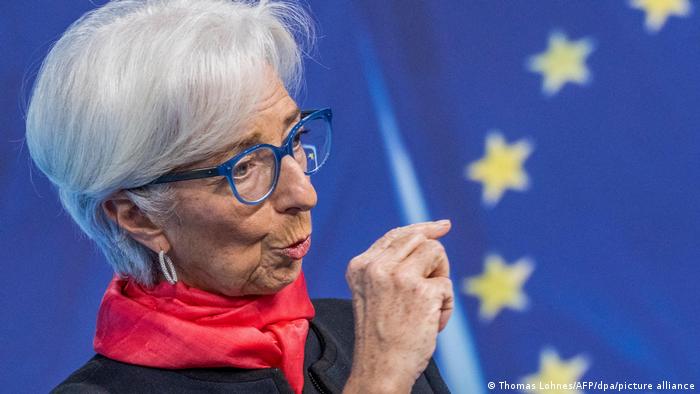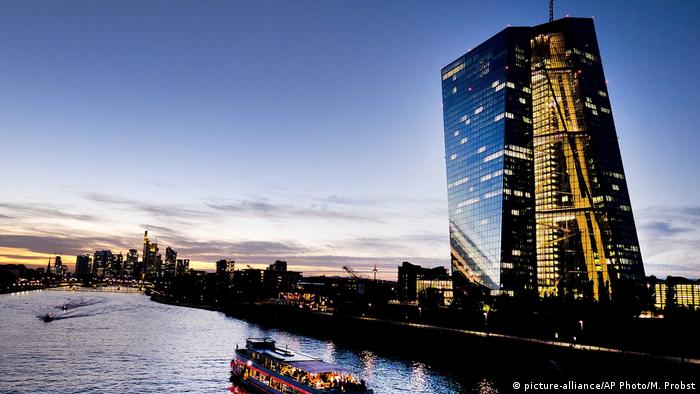ECB President Christine Lagarde hinted at an interest rate turnaround in July. Other central bankers had previously made similar statements. A turnaround in interest rates seems foreseeable – and also an end to penalty interest for savers.

The interest could be a bit rise, says ECB boss Christine Lagarde
In a speech in Slovenia's Ljubljana on Wednesday, ECB President Christine Lagarde reiterated that a rate hike could come some time after the end of bond purchases. But then it got exciting: when she said that she had also made it very clear that this could also mean a period of just a few weeks.
What sounds like a mere repetition is far more than that. “That's the hint with the really thick fence post. You can't make such a clearer reference. At the ECB meeting on July 21 we will get the first rate hike.” , Carsten Brzeski, chief economist at ING, told DW.
Bundesbank President Joachim Nagel made a similar statement to Lagarde on Wednesday. He said high inflation is sapping household purchasing power and, coupled with uncertainties surrounding the Ukraine war, is leading to a loss of confidence. After the end of the bond purchases in June, a rate hike should follow in the near future – and this could be in July.
Fast action is required
According to Nagel, quick action is required because otherwise there is a risk that prices and wages will build up against each other and that inflation expectations will get out of hand. In any case, after the last ECB council meeting in mid-April, Christine Lagarde did not want to commit to when interest rates could be raised in the third quarter. “It can be early, it can be late. The third quarter has three months.” It's getting early now.
Christine Lagarde and Bundesbank President Nagel underlined once again on Wednesday that the decisions of the central bank will be based on current economic data at the respective point in time. This gives the ECB the flexibility it feels it needs to react to changes.

Headquarters the ECB in Frankfurt am Main
The key interest rate in the euro area has been zero percent for more than six years. Banks that park money with the central bank even have to pay a negative interest rate of 0.5 percent. In this way, the ECB has tried in recent years to keep the flow of credit going and thus strengthen the economy. The primary mandate of the ECB is to ensure price stability. And the currency watchdogs see inflation at around two percent.
Energy as a price driver
Since inflation has been permanently too low in recent years, the central bank has tried to drive inflation back towards two percent with its ultra-loose monetary policy. However, due to delivery bottlenecks during the pandemic last year and rising energy costs, inflation had already climbed well over two percent by the end of the year.
With the Ukraine war and corona lockdowns in China, however, the supply chain problems have intensified again; at the same time, energy prices have exploded. As a result, inflation in the euro zone was 7.5 percent most recently. And the economy is faltering. “We currently have a stagnating economy and high inflation – in the truest sense of the word 'stagflation'. And that's the biggest challenge that a central bank can imagine,” says Carsten Brzeski.
The end of penalty interest is approaching
Indeed it is a dilemma. Because if the ECB normalizes its monetary policy too quickly and raises interest rates, it threatens to stall the economy. Because high interest rates slow down investments that are necessary in the necessary transformation of the economy towards sustainability. In addition, rising interest rates are also increasing the pressure on most governments in the euro area, whose public debt is high due to the aid programs in the pandemic.
Nevertheless, the ECB now apparently feels under pressure to at least set the tone with an interest rate hike that it is starting to head against the high inflation. This is good news for savers, because it is foreseeable that the interest on the savings accounts will rise again.
In the past few weeks, some banks have announced that they will increase or completely abolish the allowances for negative interest. With the ECB's negative deposit rate of 0.5 percent for banks, in recent years they have introduced so-called 'custody fees' for customers who prefer to have high savings. With a possible interest rate turnaround by the ECB in July, that should be largely history.